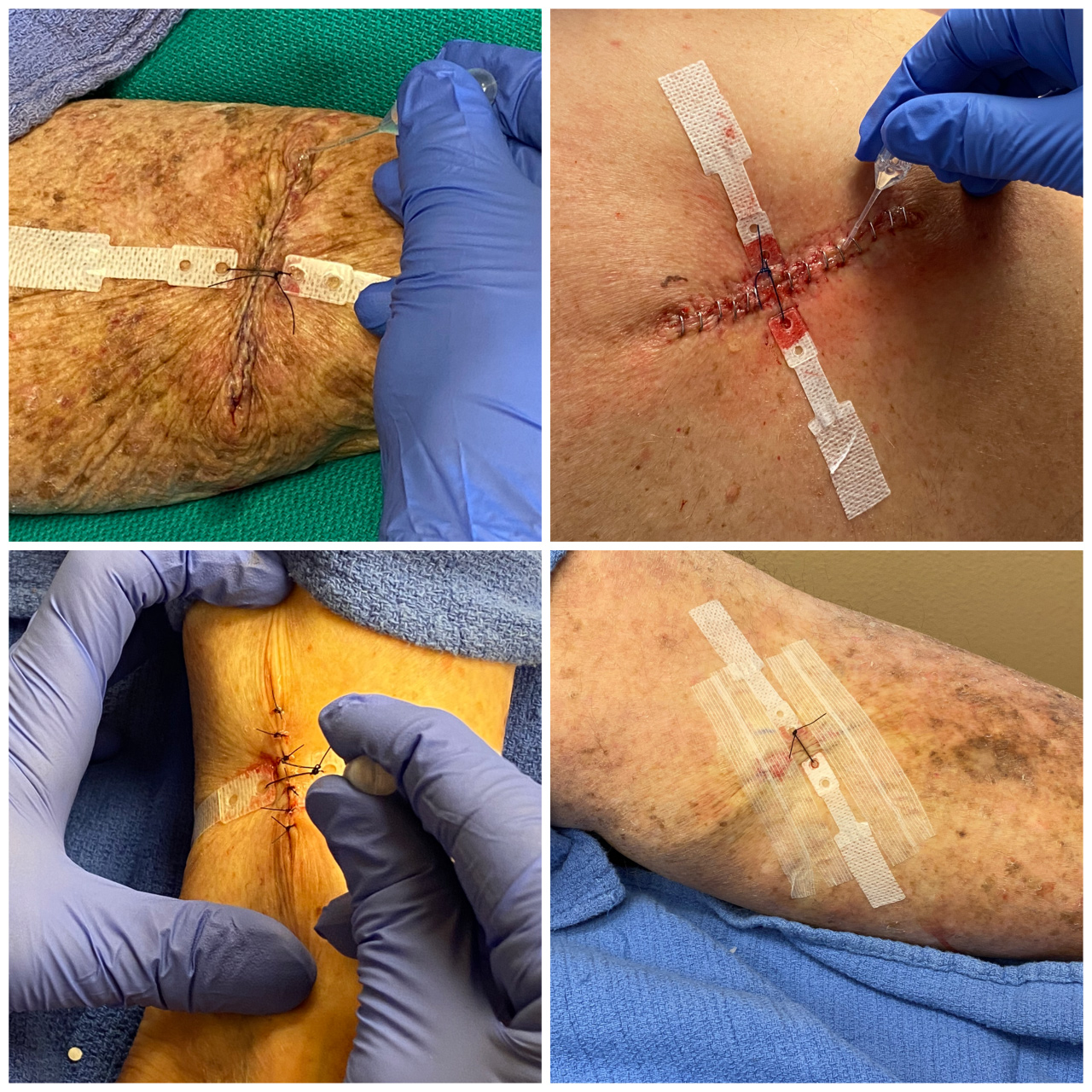Most skin cancer removals are performed in an elliptical manner, where the middle is the widest portion. Our research has demonstrated that the middle suture in an elliptical wound is under approximately six times more force than any subsequent suture. That is why we use the HEMIGARD™ Adhesive Retention Suture device for that middle suture: it provides a robust and rip-resistant support to the healing wound for up to two weeks.
Once the wound is closed with the HEMIGARD™ and a few dermal sutures, there is minimal wound tension for the epidermal closure. For several reasons, we love using GLUSEAL® High Viscosity Liquid Bandage to finish the epidermal closure:
- No further foreign bodies are introduced into the wound. For example, running subcuticular sutures introduces a relatively large amount of intradermal foreign body to the wound, which can lead to prolonged redness and sutures perforating through the skin ("spitting stitches").
- No further percutaneous injury, unlike staples and nonabsorbable percutaneous sutures.
- It seals the wound edges thereby reducing fluid leakage from the wound. For HEMIGARD™ closures, we prefer to keep the HEMIGARD™ strips dry for at least 5-7 days. By using GLUSEAL® along the edges, it makes wound care simple: just a dry, nonadherent gauze (e.g. Telfa) and covering (or wrap for an arm or leg). We combine GLUSEAL® with other methods of superficial support too (e.g. staples, nonabsorbable sutures, steri-strips).
- There are well-documented anti-microbial effects of acylate adhesives. This is especially beneficial for HEMIGARD™ closures on the leg.
- Finally, we appreciate that GLUSEAL® is a multi-use vial: you can dispense only what you need for a given case. This minimizes waste and makes for an economical and effective superficial wound closure method.
 GLUESEAL alone (top left), GLUSEAL and staples (top right), GLUSEAL and simple interrupted sutures (bottom left), GLUSEAL and steristrips (bottom right)
GLUESEAL alone (top left), GLUSEAL and staples (top right), GLUSEAL and simple interrupted sutures (bottom left), GLUSEAL and steristrips (bottom right)